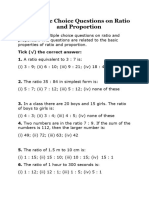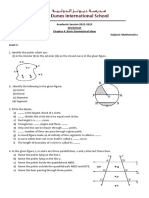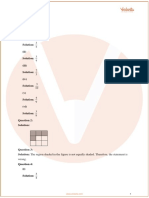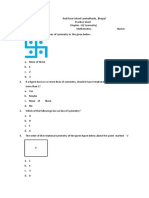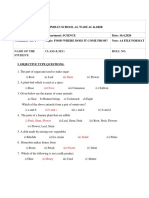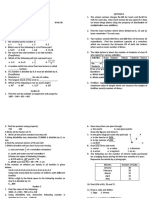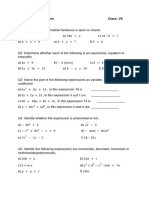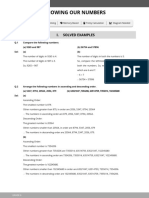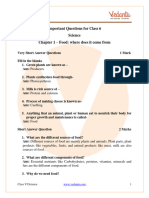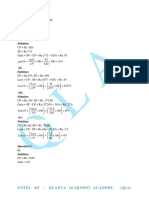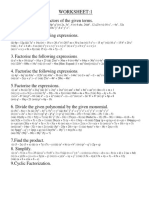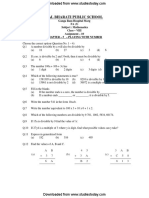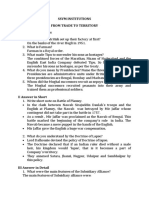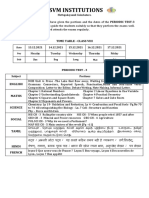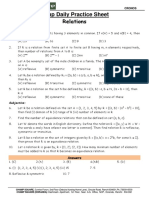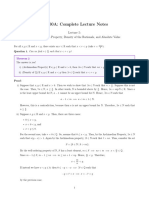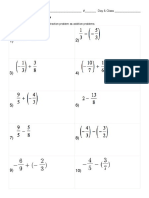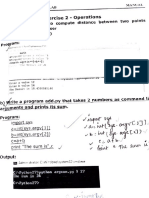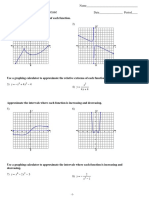8/9/2020 Integers
Introduction to Integers
Introduction to Numbers
Natural Numbers : The collection of all the counting numbers is called set of natural
numbers. It is denoted by N = {1,2,3,4....}
Whole Numbers: The collection of natural numbers along with zero is called set of whole
numbers. It is denoted by W = { 0, 1, 2, 3, 4, 5, ... }
Properties of Addition and Subtraction of Integers
Properties of Addition and Subtraction of Integers
Closure under Addition and subtraction
For every integer a and b, a + b and a– b are integers.
Commutativity Property for addition
for every integer a and b, a + b = b + a
Associativity Property for addition
for every integer a,b and c, (a + b) + c = a + (b + c)
Additive Identity & Additive Inverse
Additive Identity
For every integer a, a + 0 = 0 + a = a here 0 is Additive Identity, since adding 0 to a number
leaves it unchanged.
Example : For an integer 2, 2+0 = 0+2 = 2.
Additive inverse
For every integer a, a + (−a) = 0 Here, −a is additive inverse of a and a is additive inverse of
−a.
Example : For an integer 2, (– 2) is additive inverse and for (– 2), additive inverse is 2. [Since
+ 2 - 2 = 0]
Properties of Multiplication of Integers
Properties of Multiplication of Integers
https://learn.byjus.com/revision-summaries/22453 1/4
�8/9/2020 Integers
Closure under Multiplication
For every integer a and b, a × b = I nteger
Commutative property of Multiplication
For every integer a and b, a × b = b × a
Multiplication by Zero
For every integer a, a × 0 = 0 × a = 0
Multiplicative Identity
For every integer a, a × 1 = 1 × a = a. Here 1 is the multiplicative identity for integers.
Associative property of Multiplication
For every integer a, b and c, (a × b) × c = a × (b × c)
Distributive Property of Integers
Under addition and multiplication, integers show distributive property.
i.e., For every integer a, b and c, a × (b + c) = a × b + a × c
These properties make calculations easier.
Division of Integers
Division of Integers
When a positive integer is divided by a positive integer, the quotient obtained is a positive
integer.
Example :
+6
= +2
+3
When a negative integer is divided by a negative integer, the quotient obtained is a positive
integer.
Example : = +2
−6
−3
When a positive integer is divided by a negative integer or negative integer is divided by a
positive integer, the quotient obtained is a negative integer.
Example : = −2 and Example :
−6 +6
= −2
+3 −3
The Number Line
Number Line
Representation of integers on number line
https://learn.byjus.com/revision-summaries/22453 2/4
�8/9/2020 Integers
On a number line when we
(i) add a positive integer for a given integer, we move to the right.
Example : When we add +2 to +3, move 2 places from +3 towards right to get +5
(ii) add a negative integer for a given integer, we move to the left.
Example : When we add -2 to +3, move 2 places from +3 towards left to get +1
(iii) subtract a positive integer from a given integer, we move to the left.
Example : When we subtract +2 from -3, move 2 places from -3 towards left to get -5
(iv) subtract a negative integer from a given integer, we move to the right
Example : When we subtract -2 from -3, move 2 places from -3 towards right to get 1
Addition and Subtraction of Integers
Absolute value of +7 (positive integer) is 7
Absolute value of -7 (negative integer) is 7 (its corresponding positive integer)
Addition of two positive integers gives a positive integer.
Example : +3 + 4 = +7
Addition of two negative integers gives a negative integer.
Example : (−3) + (−4) = −3 − 4 = −7
When one positive and one negative integers are added, we take their difference and place
the sign of the bigger integer.
Example : (−7) + (2) = −5
For subtraction, we add the additive inverse of the integer that is being subtracted, to the
other integer.
Example : 56– (– 73) = 56 + 73 = 129
Introduction to Zero
Integers
https://learn.byjus.com/revision-summaries/22453 3/4
�8/9/2020 Integers
Integers are the collection of numbers which is formed by whole numbers and their
negatives.
The set of Integers is denoted by Z or I. I = { ..., -4, -3, -2, -1, 0, 1, 2, 3, 4,... }
Properties of Division of Integers
Properties of Division of Integers
For every integer a,
(a) is not defined
a
(b)
a
= a
1
Note: Integers are not closed under division
Example :(– 9) ÷ (– 3) = 2. Result is an integer.
and (−3) ÷ (−9) = . Result is not an integer.
−3 1
=
−9 3
Multiplication of Integers
Multiplication of Integers
Product of two positive integers is a positive integer.
Example : (+2) × (+3) = +6
Product of two negative integers is a positive integer.
Example :(−2) × (−3) = +6
Product of a positive and a negative integer is a negative integer.
Example :(+2) × (−3) = −6 and (−2) × (+3) = −6
Product of even number of negative integers is positive and product of odd number of
negative integers is negative.
These properties make calculations easier.
https://learn.byjus.com/revision-summaries/22453 4/4





